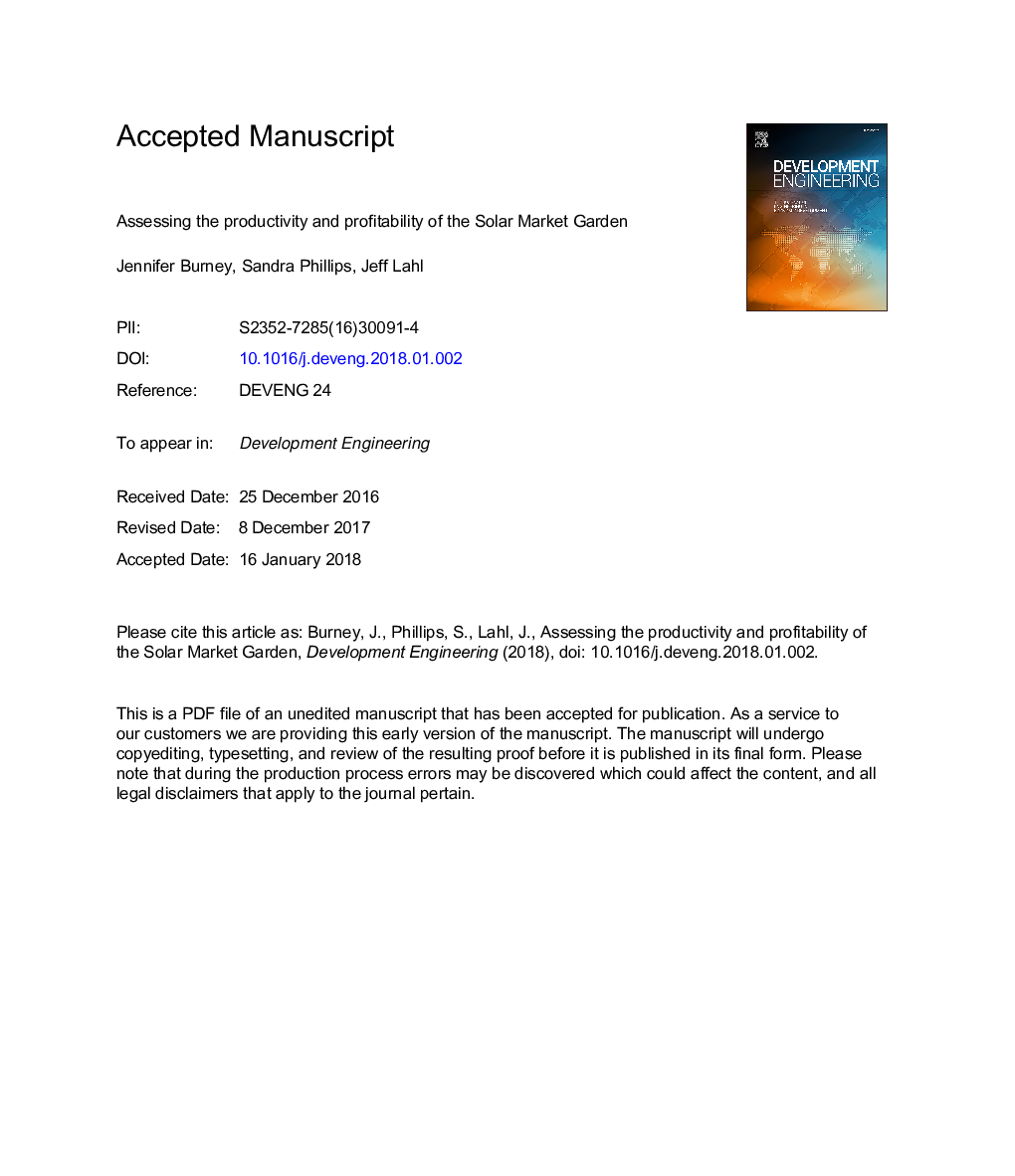| کد مقاله | کد نشریه | سال انتشار | مقاله انگلیسی | نسخه تمام متن |
|---|---|---|---|---|
| 7216208 | 1469674 | 2018 | 50 صفحه PDF | دانلود رایگان |
عنوان انگلیسی مقاله ISI
Assessing the productivity and profitability of the Solar Market Garden
ترجمه فارسی عنوان
ارزیابی بهره وری و سودآوری باغ خورشیدی
دانلود مقاله + سفارش ترجمه
دانلود مقاله ISI انگلیسی
رایگان برای ایرانیان
کلمات کلیدی
موضوعات مرتبط
مهندسی و علوم پایه
سایر رشته های مهندسی
مهندسی (عمومی)
چکیده انگلیسی
Successful scale-up of any development project requires a deep understanding of the real-world economics of the intervention, and compelling evidence that such an investment would be worthwhile. This cost-benefit estimate is typically assessed in two ways: (a) by comparing the coefficient of impact along some margin measured in an impact evaluation (βË) to the unit implementation cost of the project, and/or (b) by conducting adoption studies, where autonomous adoption is assumed to indicate that the adopter has deemed the investment worthwhile (i.e., financially sustainable). However, these two techniques can be particularly difficult for development engineering projects that are large at the unit scale (or are group-based) and for projects that may have impacts on many margins or outcomes at once. Here we present the framework for, and analysis from, a field monitoring campaign in the interim evaluation period for community-scale solar-powered irrigation systems (Solar Market Gardens, or SMGs) in northeast Benin, West Africa. We used this interim monitoring to directly construct a CBA, and to document the pathways of impact actually at play for a project hypothesized ex-ante to have potential economic, food security, and gender impacts. We monitored all garden activity a the individual and group level for most of the dry season, including total production, sales, home consumption, input use, marketing, and labor (a key factor often overlooked when considering the cost of agricultural development projects). By combining production and sales data with cost information, we show that the most productive agricultural groups using the system only in the dry season would be profitable in a full cost-recovery model with no economies of scale, but that lower performing groups would not; we also show that many plausible scale-up models and financing mechanisms would be profitable. We then show how this type of monitoring can complement impact evaluation by elucidating different pathways of impact that could be used to understand heterogeneity in outcomes among beneficiaries. We document variance both within and between groups across numerous potential pathways of impact for the SMG; the heterogeneity in intraclass correlation coefficients (ICCs) across these indicators highlights the importance of understanding the causal chain(s), especially for cross-sectoral development engineering projects like the SMG. We conclude by discussing how this monitoring effort fits into the larger evaluation of the SMG, and how such data have been used to both adaptively refine the project, improving the likelihood for successful scale-up.
ناشر
Database: Elsevier - ScienceDirect (ساینس دایرکت)
Journal: Development Engineering - Volume 3, 2018, Pages 60-71
Journal: Development Engineering - Volume 3, 2018, Pages 60-71
نویسندگان
Jennifer Burney, Sandra Phillips, Jeff Lahl,
